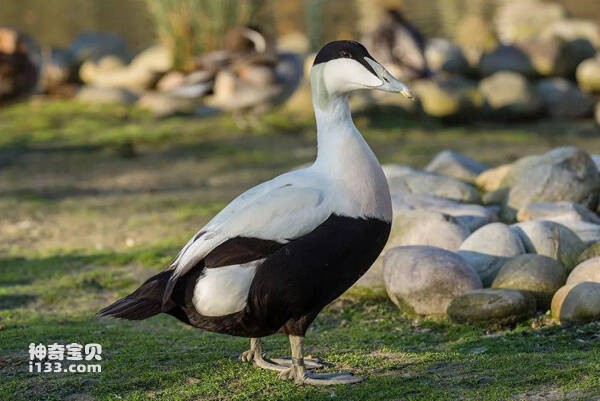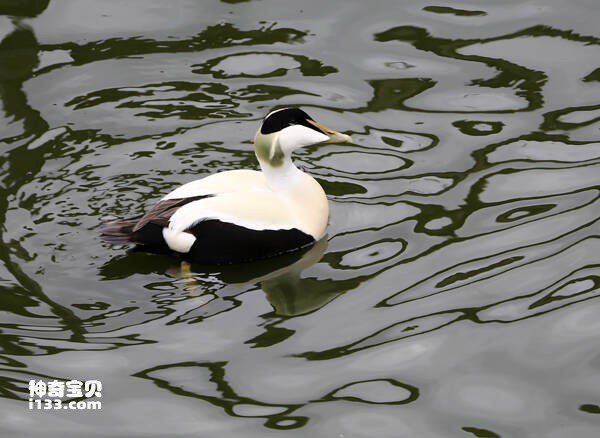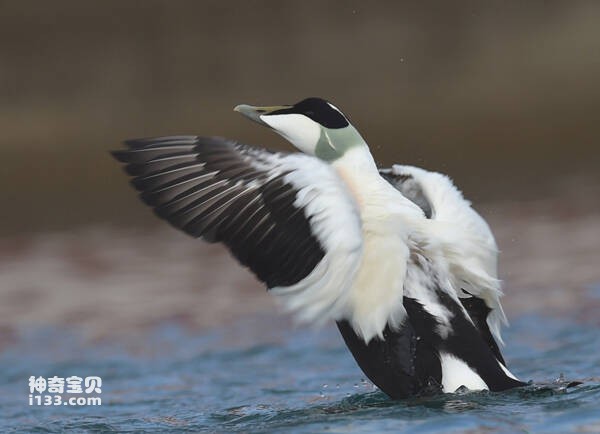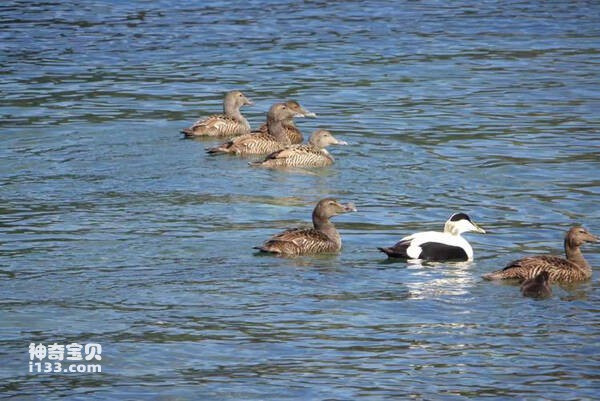Somateria mollissima
IUCN
LCBasic Information
Scientific classification
- name:Somateria mollissima
- Scientific Name:Somateria mollissima,Common Eider
- Outline:Waterfowl
- Family:
Vital signs
- length:50-70CM
- Weight:1.2-2.8kg
- lifetime:About 18 years
Feature
Any of various large, fat, fluffy birds of the family Anatidae
Distribution and Habitat
Countries of origin: Austria, Belarus, Belgium, Bulgaria, Canada, Czech Republic, Denmark, Estonia, Faroe Islands, Finland, France, Germany, Greenland, Iceland, Ireland, Italy, Latvia, Liechtenstein, Lithuania, Macedonia, Netherlands, Norway, Poland, Romania, Russian Federation, Saint Pierre and Miquron, Slovak Croatia, Slovenia, Spain, Svalbard and Jan Mayen, Sweden, Switzerland, Ukraine, United Kingdom, United States.
Travelers: Bosnia and Herzegovina, Croatia, Georgia, Greece, Hungary, Israel, Japan, Luxembourg, Montenegro, Portugal, Serbia, Turkey.
During the breeding period, it mainly inhabits forests and rivers, lakes and estuaries near forests and open plateau waters. Non-breeding period mainly inhabits large inland lakes, rivers, reservoirs, ponds, estuaries and other freshwater waters, occasionally to bays, estuaries and coastal intertidal zones.
Appearance
Eider ducks have a length of 50-70 cm, a wingspan of 80-108 cm, a weight of 1200-2800g and a lifespan of 18 years. There are six subspecies of eiders, the main difference is the length and color of the bill, the male body color is different, the head has a unique green hue. Distributed in Alaska, northeast Siberia, and northwest Canada, the Pacific Edown duck can be distinguished from other species by its size, the shape of its beak, and the "V" shape of the male larynx. The upper body of the male body is mainly white, and the head, abdomen and tail are black. The body is large and round, with a raised beak. In spring, the eider ducks wear black and white plumage. The male and female are different in appearance, and the female eider duck is mostly brown and some of the female duck is like the duck. There was little difference between male and female in young eider ducks.
Details
The Eider duck (Somateria mollissima) is known as Common Eider and has six subspecies.

Eider ducks are the largest sea ducks, and some have migratory behavior. Like other eider ducks, this species is native to the far North. Breeds on icy coasts as far south as Holland and St. Lawrence Bay; Wintering as far south as France, New England, and the Aleutian Islands.
Throughout the year, Eiders feed on invertebrates such as mollusks, worms, and crustaceans. It gets most of its food from the ocean floor, so it likes to swim around the shallow waters of the continental margins.

Every year in late summer, when the Arctic islands are surrounded by water, eider ducks begin to build nests and breed on the islands, usually under driftwood or clumps of seaweed, to shelter them from the wind. The female duck uses a large number of branches, leaves, grass, seaweed and other nesting bottom, and arranges the fluff in the nest for lining. The nest should be in a sheltered area of rock or vegetation. Foraging under the tide during the day, diving 10-18m depth, using wings to paddle underwater, and flying straight out of the water with wings. A hard shell and its gizzard capable of crushing shells. Female eider ducks lay 1-10 eggs per litter (average 5), the color of the eggshells are light olive oil, brown olive oil and gray olive oil, and the egg length is 7.6cm. What is surprising is that the eider duck's nesting area is very close to the nest of a kind of seagull, and this kind of seagull is not easy to get along with, is the hunter of the eider duck eggs and chicks, and the Eider duck likes to make use of the power of this seagull, to drive away its more powerful enemies such as skuas, Arctic foxes, etc., so that the seagull protects its own nesting area, but also to protect the eider duck from harm.

Eider ducks are monogamous and are incubated by the female for 21-28 days. During this period, female eider ducks rarely leave their nest area and concentrate on breeding. After hatching, the young are led by the female duck and come to the sea together, playing while constantly diving into the water to get food. Under normal circumstances, several families of eider ducks will join together and live a collective life, like a kindergarten. Flying began after 56 days, and by September, they were able to spread their wings and head west to winter in the Bering Sea and the Gulf of Alaska.
In Iceland, eider ducks are strictly protected. These include vulnerability to oil pollution, the pursuit of female ducks for valuable duck down, and overfishing in the Arctic Circle. This duck is the source of eiderdown (the female plucks off her breast feather when she leaves the nest). Duck down can be used as a filling for coats, pillows, bedding, sleeping bags and clothing, soft and thermal insulation, the female soft duck down is the most famous. People have learned a better way than killing eider ducks for fleece, by attacking 35-40 nests in a row when young eider ducks leave the nest, and quickly collecting 1 pound of fleece for every 35-40 nests without affecting the breeding cycle.

Listed on the International Union for Conservation of Nature (IUCN) 2013 Red List of Threatened Species ver 3.1 - Low Risk (LC).
Protect wild animals and eliminate wild meat.
Maintaining ecological balance is everyone's responsibility!








